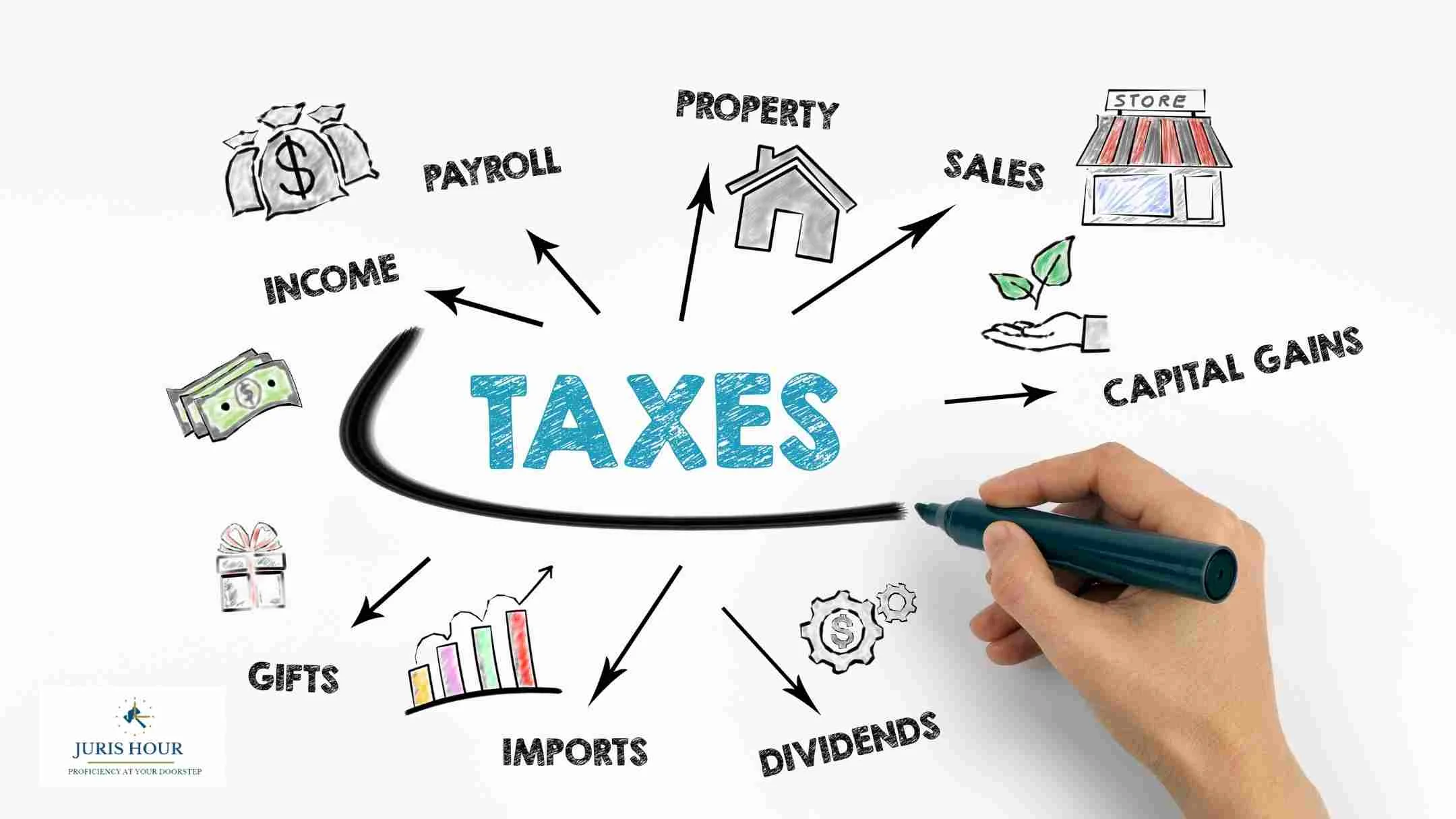Taxation is the backbone of a nation’s economic structure, enabling the government to fund public services, infrastructure, defense, and welfare schemes. In India, the tax system is a mix of direct and indirect taxes, administered at both the Central and State levels. Understanding its key concepts is essential for citizens, businesses, students, and professionals alike.
1. Constitutional Framework of Taxation in India
India follows a federal system, where powers of taxation are distributed between the Union and the States under the Seventh Schedule of the Constitution:
- Union List: Central Government taxes (e.g., Income Tax, Customs, Excise on tobacco)
- State List: State Government taxes (e.g., State Excise, Stamp Duty, Land Revenue)
- Concurrent List: Rare cases; for example, GST is a unique model where both Centre and State can tax the same transaction.
2. Types of Taxes in India
A. Direct Taxes
These are taxes levied directly on an individual or entity and paid to the government.
| Type | Description | Administered By |
| Income Tax | Tax on individual and corporate income | Central Board of Direct Taxes (CBDT) |
| Corporate Tax | Tax on profit of companies | CBDT |
| Capital Gains Tax | On gains from sale of capital assets | CBDT |
| Securities Transaction Tax (STT) | Tax on trading of securities | CBDT |
| Dividend Distribution Tax (Now abolished) | Was levied on companies for distributing dividends | Abolished in Union Budget 2020 |
B. Indirect Taxes
These are taxes levied on goods and services, ultimately borne by the end consumer.
| Type | Description | Administered By |
| Goods and Services Tax (GST) | Comprehensive indirect tax on manufacture, sale, and consumption of goods/services | GST Council, CBIC |
| Customs Duty | Tax on imports and exports | Central Board of Indirect Taxes and Customs (CBIC) |
| Excise Duty | Still levied on certain goods like liquor, petroleum | CBIC / State Excise Departments |
3. Goods and Services Tax (GST)
GST, introduced in July 2017, subsumed most indirect taxes in India. It follows a dual model:
| Component | Levied By |
| CGST (Central GST) | Central Government |
| SGST (State GST) | State Government |
| IGST (Integrated GST) | On inter-state supplies, levied by Centre and shared with States |
Key Features:
- Destination-based tax
- Input Tax Credit (ITC) mechanism
- GST Network (GSTN) for e-filing and compliance
- Monthly, quarterly and annual returns
4. Important Tax Authorities
| Authority | Role |
| CBDT | Policy formulation and administration of direct taxes |
| CBIC | Administration of GST, Customs, Excise |
| GST Council | Body of Centre and State representatives for GST-related decisions |
5. Taxpayer Categories
| Category | Description |
| Individual | Resident or non-resident earning income |
| HUF (Hindu Undivided Family) | Taxable as a separate entity |
| Firms/LLPs | Partnership firms and LLPs |
| Companies | Domestic and foreign companies |
| Trusts and Societies | Non-profit entities, sometimes enjoy exemptions |
6. Income Tax Slabs (FY 2025–26)
For Individuals under the New Regime:
| Income Range | Tax Rate |
| ₹0 – ₹3,00,000 | 0% |
| ₹3,00,001 – ₹6,00,000 | 5% |
| ₹6,00,001 – ₹9,00,000 | 10% |
| ₹9,00,001 – ₹12,00,000 | 15% |
| ₹12,00,001 – ₹15,00,000 | 20% |
| Above ₹15,00,000 | 30% |
Note: The Old Regime with deductions like 80C, 80D is still available as an option.
7. Key Tax Concepts
A. PAN (Permanent Account Number)
A unique alphanumeric identifier issued by the Income Tax Department; mandatory for all financial transactions.
B. TDS (Tax Deducted at Source)
Tax deducted at the time of income generation (e.g., salary, interest, contract payments). Helps in reducing tax evasion.
C. Advance Tax
Tax payable in installments during the financial year if estimated liability exceeds ₹10,000.
D. Self-Assessment Tax
Paid by the taxpayer before filing the return if there’s a shortfall in TDS or advance tax.
E. ITR (Income Tax Return)
Filed annually to declare income and taxes paid; mandatory for those exceeding the basic exemption limit.
8. Tax Exemptions and Deductions
| Section | Purpose | Limit |
| 80C | Investments in LIC, PPF, ELSS, etc. | ₹1.5 lakh |
| 80D | Medical Insurance | ₹25,000–₹1,00,000 |
| 80G | Donations to charities | 50%–100% |
| 24(b) | Interest on home loan | ₹2 lakh |
| 10(14) | HRA Exemption | Based on salary and rent paid |
9. Compliance and Filing
- Due Date for individuals: Generally July 31st of the assessment year
- Form 26AS: Tax credit statement from the IT department
- AIS (Annual Information Statement): Detailed financial transaction history
- Faceless Assessment & Appeals: Introduced to improve transparency and reduce interface with officials
10. Penalties and Prosecution
| Offence | Penalty |
| Non-filing of ITR | ₹1,000 to ₹5,000 |
| Misreporting of income | 50%–200% of tax due |
| Tax Evasion | Imprisonment up to 7 years with fine |
11. Recent Developments (2024–2025)
- New Tax Portal with faster processing and e-verification
- AIS and TIS (Taxpayer Information Summary) launched
- Pre-filled ITRs with capital gains, dividends, and salary details
- CBDT guidelines on high-value transactions
- Increased use of AI & analytics to track evasion and enforce compliance
Conclusion
India’s tax system, while complex, is evolving rapidly with digitization, simplification, and a focus on transparency. Whether you’re a salaried individual, a business owner, or a student of law or commerce, understanding these tax concepts is vital for making informed decisions, avoiding legal troubles, and contributing responsibly to the nation’s growth.


